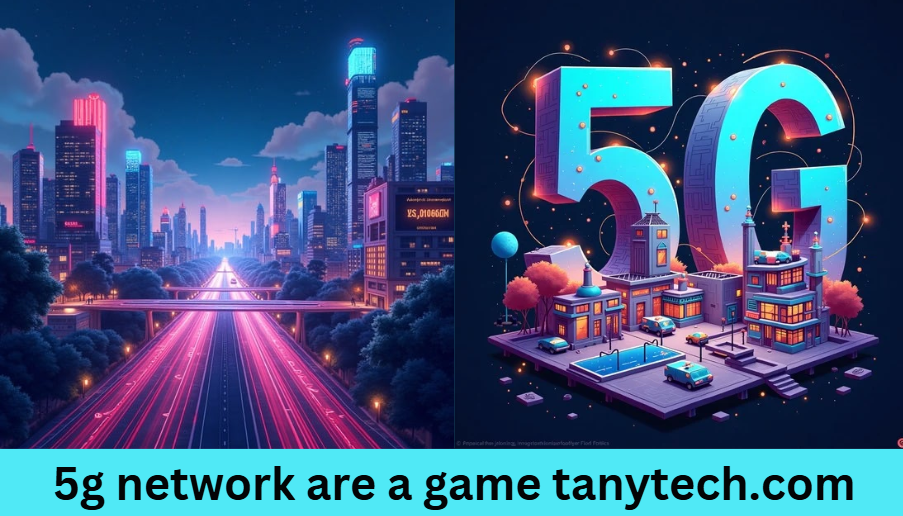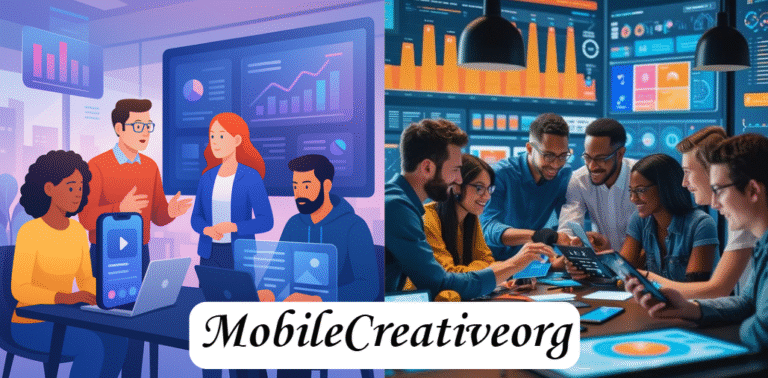Ultimate Guide to 5g network are a game tanytech.com – Transforming Connectivity for the Future
The world of connectivity is undergoing a revolution with the advent of 5G technology. This comprehensive guide on 5g network are a game tanytech.com explores the transformative power of 5G, detailing its technical innovations, industry impacts, economic benefits, and future prospects.
Whether you are a tech enthusiast, a business leader, or a curious consumer, this guide is designed to provide in‑depth insights into how 5G is changing the game for everyone.
Background on 5G Technology
5G, the fifth generation of wireless networks, marks a significant leap from previous technologies such as 4G. Unlike its predecessors, 5G offers ultra-high speeds, drastically reduced latency, and the ability to connect billions of devices simultaneously.
This new network architecture is built on advanced technologies such as massive multiple-input multiple-output (MIMO), beamforming, and network slicing. These innovations are not just incremental improvements; they are revolutionary enhancements that have the potential to transform the way we communicate, work, and live.
Platforms like tanytech.com have highlighted 5G as a disruptive force in the tech industry. Their discussion frames 5G as a catalyst for change, paving the way for new applications and services that were previously unimaginable. This guide will explore these discussions and present a balanced view of the opportunities and challenges brought by 5G.
Technical Innovations of 5G
At the core of 5G technology lies a suite of technical innovations that differentiate it from 4G. The architecture of 5G is designed to support higher data speeds and lower latency, making it possible to stream ultra-high-definition videos, facilitate real-time communication, and support emerging technologies like autonomous vehicles and smart cities.
To illustrate these differences, consider the following table comparing 4G and 5G:
| Feature | 4G Network | 5G Network |
|---|---|---|
| Data Speed | Up to 100 Mbps | Up to 10 Gbps |
| Latency | 30-50 milliseconds | 1-5 milliseconds |
| Device Connectivity | Limited IoT support | Massive IoT with billions of devices |
| Network Architecture | Traditional cell towers | Small cells, beamforming, and network slicing |
The advanced capabilities of 5G networks are making it possible for businesses and consumers alike to experience a more connected and efficient world. With higher speeds and greater capacity, 5G is set to become the backbone of modern communication and digital transformation.
Industry Impact and Use Cases
The impact of 5G extends far beyond faster internet speeds. In industries ranging from healthcare to manufacturing, the ability to transmit data almost instantaneously is opening up new avenues for innovation.
In healthcare, for instance, 5G enables remote surgery, telemedicine, and real-time health monitoring, enhancing patient care and reducing response times in emergencies. In the realm of autonomous vehicles, the low latency of 5G is critical for ensuring the safe and efficient operation of self-driving cars.
Smart cities are also set to benefit, as 5G supports extensive IoT deployments that can improve public services, traffic management, and environmental monitoring.
These real-world applications exemplify why experts say 5g network are a game tanytech.com—a statement that captures the essence of how 5G is redefining connectivity. By integrating this technology into daily operations, industries can boost productivity, improve safety, and offer enhanced consumer experiences.
Economic and Social Impacts
The rollout of 5G networks is expected to have significant economic benefits. With its ability to support a vast number of connected devices and facilitate faster data exchange, 5G is poised to drive productivity and innovation across various sectors. Enhanced connectivity will not only streamline business operations but also create new revenue streams and opportunities for startups and established companies alike.
Socially, 5G promises to transform consumer experiences. From seamless streaming of ultra-high-definition content to advanced virtual and augmented reality applications, the improvements in speed and latency will change the way we interact with digital content. This technological leap will also foster better remote communication, allowing people to work, study, and socialize more effectively from anywhere in the world.
Deployment Challenges and Considerations
Despite its many advantages, the deployment of 5G is not without challenges. Establishing the infrastructure required for 5G, such as a dense network of small cell towers, demands significant investment and regulatory support.
There are also concerns related to security and privacy, as increased connectivity can create new vulnerabilities. It is essential for stakeholders to address these challenges by investing in robust cybersecurity measures and developing policies that protect users while enabling innovation.
Future Trends and Prospects
Looking ahead, the evolution of 5G will continue to fuel technological advancements. Researchers are already exploring the possibilities of 6G, which promises even faster speeds and more sophisticated network capabilities.
As 5G becomes more widespread, its integration with emerging technologies such as artificial intelligence and edge computing will further enhance its impact on both the economy and society.
Regions around the world are at various stages of 5G adoption, and the global race for superior connectivity will likely drive more competitive innovations. The future of connectivity is bright, with 5G setting the stage for a more interconnected and efficient world.
Practical Applications and Consumer Advice
For consumers, the benefits of 5G are readily accessible through new devices and service plans that offer ultra-high-speed connectivity. Understanding how to choose the right device and plan can help maximize the advantages of 5G, whether it’s for streaming, gaming, or professional use.
Businesses, on the other hand, can leverage 5G to streamline operations, improve customer engagement, and drive innovation. Adopting 5G technology can mean more efficient processes, enhanced data analytics, and a competitive edge in today’s fast-paced market.
FAQ’s
What environmental impacts are associated with the deployment of 5G networks?
While 5G promises enhanced connectivity and efficiency, its rollout also raises questions about energy consumption and infrastructure sustainability. This FAQ explores how the industry is addressing energy efficiency, the use of renewable energy sources, and strategies to minimize the ecological footprint of expanding network hardware.
How will 5G improve emergency services and disaster response?
Beyond consumer benefits, 5G is set to transform emergency management. This question delves into how 5G’s ultra-low latency and high reliability will facilitate rapid data transmission for real-time disaster response, support first responders with improved communication tools, and enable the deployment of advanced technologies like drones and IoT sensors in crisis scenarios.
How does the global adoption of 5G vary across regions?
Different countries are progressing at varying speeds in rolling out 5G. This FAQ examines factors such as economic investment, regulatory frameworks, and technological readiness that influence the pace of 5G adoption around the world, providing insights into how global connectivity disparities might evolve.
What role do governments play in the 5G rollout?
Government policies and regulations are crucial in shaping 5G infrastructure. This question investigates how public investments, spectrum allocation, and regulatory measures support or hinder the deployment of 5G networks, as well as the international collaborations and geopolitical considerations involved.
Are there any health concerns related to 5G technology?
The introduction of 5G has sparked debates over potential health effects due to increased exposure to radiofrequency signals. This FAQ covers the scientific consensus on 5G radiation, ongoing research into long-term health impacts, and the measures taken by industry and governments to ensure public safety.
Conclusion
In conclusion, this ultimate guide on 5g network are a game tanytech.com provides an exhaustive look at how 5G technology is revolutionizing the way we connect, work, and live. By examining technical innovations, real-world applications, and economic impacts, we see that 5G is not just a faster network—it is a transformative force that will drive the future of digital communication.
Whether you are a consumer or a business leader, understanding the nuances of 5G will help you harness its potential for growth and innovation. Embrace the change, and let 5G redefine your digital experience.
Read more
Ultimate Guide to sun in sixth house celebs raker
In-Depth Guide to aldo weima boots: The Ultimate Comprehensive Review & Styling Guide
In-Depth Guide to the adventure medical kits rapidpure purifier water bottle 1 unit
imagesize:2160×3840 game of thrones red woman – A Comprehensive Guide






